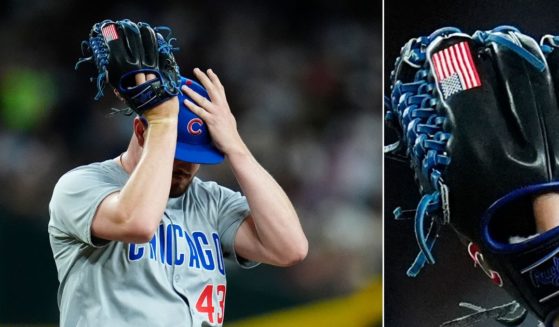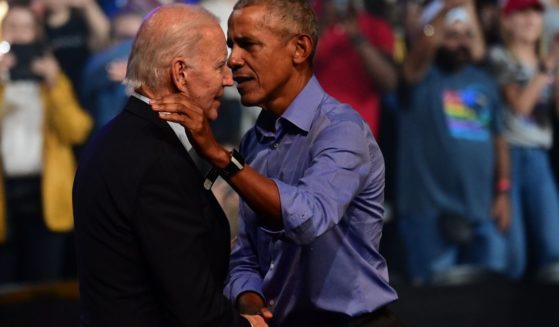5 to 11-Year-Olds Are the Next Guinea Pigs for Discovering Vaccine Risks and Benefits
Just because a Food and Drug Administration panel recommended the COVID-19 vaccine for 5- to 11-year-olds, does not mean that it is risk-free. If it was, it wouldn’t have taken eight hours for the Vaccines and Related Biological Products Advisory Committee to deliberate the matter on Tuesday.
The whole meeting revolved around answering two questions: Do the benefits of Pfizer’s vaccine for children outweigh the risks? And what are the risks?
Pfizer announced in September that the vaccine is safe and efficacious for children, but there was a general consensus during the committee meeting that the data was limited. Ultimately, the panel’s decision to recommend the vaccines for children communicates that its members are fine with letting the general public be the next round of test cases to find out more about the possible risks and side effects of the vaccine.
“We’re never going to learn about how safe this vaccine is unless we start giving it. That’s just the way it goes,” microbiologist and infectious disease expert Dr. Eric Rubin said in the meeting.
Here is what is known about the COVID vaccine from the clinical trials so far.
First, it is important to note that the clinical trials for children were not huge. There were 2,268 participants between the ages of 5 and 11 in the trial, according to Pfizer.
This is technically in accordance with the Centers for Disease Control and Prevention’s regulations for trial size, which require thousands of volunteers for the third phase. However, due to risks of significant health complications from the vaccine, federal regulators pushed both Pfizer and Moderna to expand their trial sizes over the summer.
A few thousand is not terrible for a clinical study, but with such a push to make the vaccine universal for the population, only 2,000 participants is a pretty small data pool.
Pfizer itself acknowledged that its data was limited. In fact, it did not even include data in its news release to show if the chances of children getting sick were lower.
“Gruber said that there were not enough cases of illness to tell,” Stat reported. “That means a decision has to be made on more limited data than regulators might like.”
The number of participants in this trial especially pales in comparison to the previous COVID-19 vaccine trials for adults. WCNC-TV reported in February that Pfizer’s Phase 3 of trials had 40,000 participants, while Moderna’s had 30,000.
With a relatively small clinical study, this means that if the vaccine is given emergency use authorization for children, 5- to 11-year-olds will more or less be joining a trial.
Besides concerns over fairly limited data, there are other risks from the vaccine that must be considered. One of the more serious risks, that still has lots of unresolved questions around it, is myocarditis.
Myocarditis is an inflammation of the heart muscle often caused by infection. It can cause a heart to beat irregularly, or even reduce its ability to pump. Sometimes the infection can leave the heart muscle weakened. In very rare cases, it can lead to death.
This problem can often resolve itself, but since it does affect the heart, it has the potential to become more serious, depending on the individual. Both the COVID-19 infection and vaccines have been linked to the heart complication.
This side effect of the vaccine has been rare, but it has shown up in Pfizer’s clinical trials. It is an especially concerning risk since Sweden, Finland and Denmark thought it problematic enough to pause Moderna, the other mRNA vaccine, due to an increase in myocarditis among youths.
“In the preliminary data … there is a suspicion of an increased risk of heart inflammation, when vaccinated with Moderna,” the Danish Health Authority said in a statement, according to Reuters.
Pfizer did look at the risk of myocarditis in its clinical studies, but determined it will take more time to really see how that potential risk could play out.
“The number of participants in the current clinical development program is too small to detect any potential risks of myocarditis associated with vaccination. Long-term safety of COVID-19 vaccine in participants 5 to <12 years of age will be studied in 5 post-authorization safety studies, including a 5-year follow-up study to evaluate long term sequelae of post-vaccination myocarditis/pericarditis,” Pfizer outlined in its briefing for the FDA committee meeting.
An outside Israeli study did provide more insight on this risk, however. The study, which looked at over 5 million people 16 years old and above that had been at least partially vaccinated, showed that the risk is small. But the demographic most at risk are adolescent males.
“During that time, 283 people had probable or definitive myocarditis, with 142 cases (50.2%) linked to the Pfizer vaccine,” the Center for Infectious Disease Research and Policy reported, regarding the study.
So going into the FDA meeting, there were plenty of questions about the risk of heart problems being an adverse side effect of the vaccine.
“There’s not a lot of controversy that the vaccine is causing some myocarditis. The question for the panelists is going to be how to weigh this against preventing Covid-19, which may cause more of the condition, and how severe these cases are,” Matthew Herper wrote for Stat ahead of the meeting.
Sure enough, committee members quickly brought up the heart risks that were linked to Pfizer’s vaccine.
Dr. James Hildreth, the CEO of Meharry Medical College, asked about some scenarios that Pfizer ran in its trials that showed an increase in myocarditis.
“When you did your risk-benefit assessment in your briefing document, there were six scenarios that you considered. It strikes me that scenario three, where you have the incidents from — I think it’s June of 2021, where the cases are low, the hospitalizations from myocarditis actually exceeded hospitalizations from COVID-19,” Hildreth said. “So could you comment on that, because to me, the single most important question is whether the benefits outweigh the risks, and in that scenario, they clearly don’t.”
Dr. William Gruber, Pfizer’s senior vice president for vaccine clinical research and development, answered that the benefits outweigh the risks. So while heart problems might be a risk, the benefits that the vaccine can offer in getting everyone back to normal life are greater.
“[T]he other benefits, and particularly those societal benefits — obviously protecting vulnerable populations, including populations of color, the ability to get the children back into the schoolroom setting … all of those things, I think have to enter into the equation, regardless of the rate,” Gruber said.
In its FDA committee meeting document, Pfizer reiterated that it considers myocarditis a small risk. But it’s important to note the wording and to keep remembering that since the clinical trials have been sped up, the full effects of the vaccine will have to be further discovered once it’s in the general population of 5- to 11-year-olds. There are still many side effects and responses that Pfizer can only “expect” at this point.
Despite this, the FDA committee did decide in favor of the vaccine, 17 to 0. But it is important to look at the one member who abstained from voting.
Dr. Michael Kurilla, from the National Institutes of Health, was the single abstention. He noted there was a lack of data, but particularly he questioned if vaccinating 5- to 11-year-olds was worthy of an application for emergency use.
“I don’t see the need for ‘emergency use’ of this vaccine across the entire age group and would have preferred a more nuanced approach,” Kurilla said.
There is no question that overall children are at much less risk of contracting and getting seriously ill from COVID than adults.
According to data accumulated by the American Academy of Pediatrics, states reported that only between 5.3 percent and 13.6 percent of children tested positive for COVID. Furthermore, children only accounted for 0 to 0.26 percent of all COVID-19 deaths, and 7 states reported no child deaths.
During the FDA committee’s discussion, there seemed to be some consensus that the vaccine should be available to high-risk children, but to make it universal was a bit more controversial.
“This is a really tough one. I do believe children at highest risk do need to be vaccinated, but vaccinating all the children to achieve that seems a bit much to me,” Hildreth said, according to Stat.
With such a low risk of contracting or dying from COVID in children, pushing for emergency use authorization is concerning. There does not seem to be an emergent need for the vaccine in the broad population of 5- to 11-year-olds.
No vaccine is going to be perfect and it’s natural that there will be side effects and that some may even have quite adverse responses (like myocarditis). Trying to push through a vaccine for such young children in the name of emergency should raise questions.
The speed and small data pool of the clinical trials seem to leave more questions than answers about the risks of the vaccine. At best, the data half-answers a lot of questions. Instead of convincing the FDA on grounds of strong, extensive data, Pfizer is essentially saying, “We are pretty sure that the risks aren’t too serious, but we’ll have to really just find out by giving it to the general population.”
Many decisions are going to boil down to choosing the lesser of two evils, but it should not be too much to ask for more extensive data in order to make the soundest decision possible. Most parents don’t want their child to be a guinea pig.
Truth and Accuracy
We are committed to truth and accuracy in all of our journalism. Read our editorial standards.












